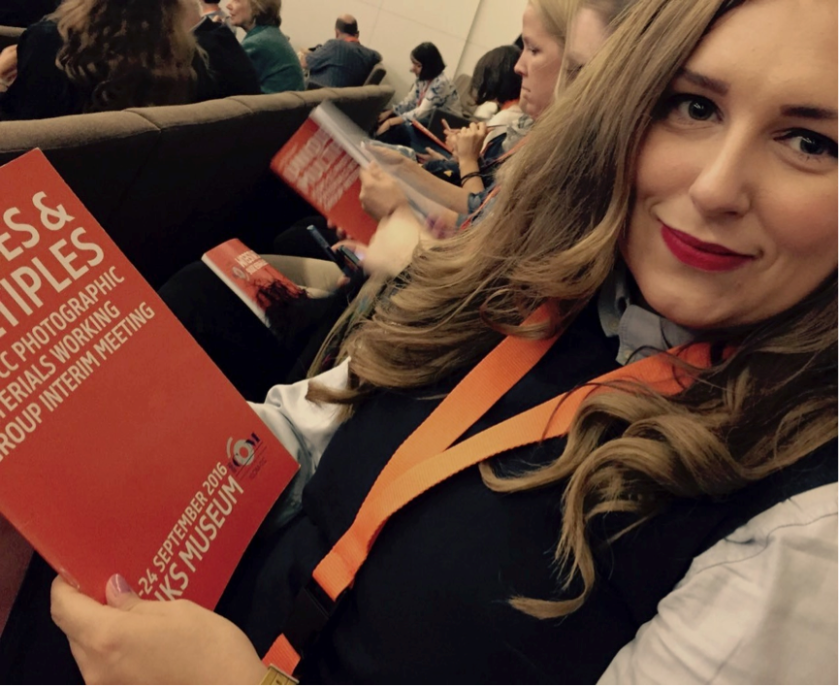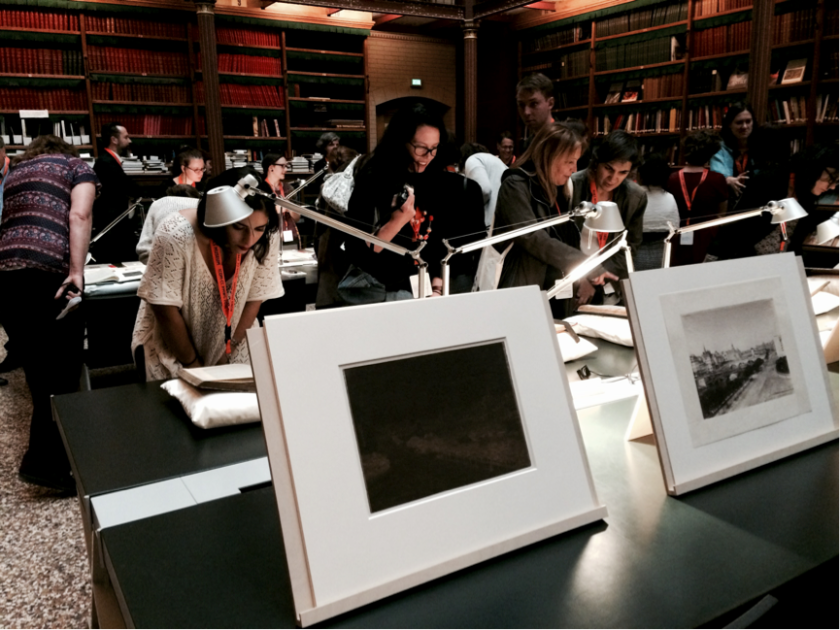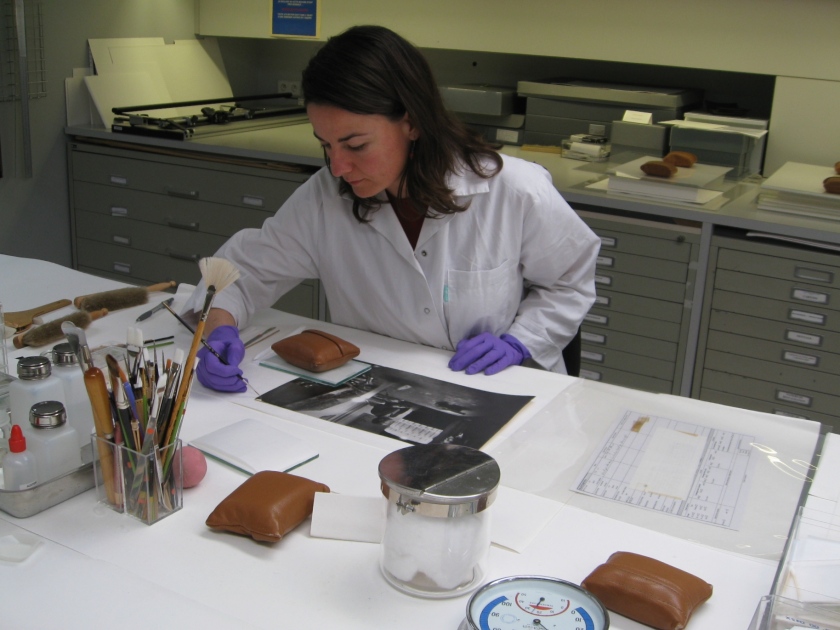
Samantha Cawson is a recent conservation graduate from Camberwell College of Arts and currently works at The National Archives, UK. Samantha previously studied an undergraduate degree in photographic arts and now aims to fuse her two specialities by keeping up to date with photographic conservation research and debates. She was awarded a Clothworkers bursary to attend the ICOM-CC photographic materials meeting in Amsterdam.
This meeting brought conservators, scientists, and art historians from over 30 different countries to the splendour of the Rijksmuseum. The museums collection includes around a million works of art with 150,000 holdings of photographic material from the 19th and 20th centuries. It was the diversity of material and photographic technique within the collection that inspired this years PMWG meeting’s theme: Uniques and Multiples.

This theme brought a real mixture of lectures, however, the talks that really caught my attention where by the conservators who where facing challenging ethical dilemmas. Nora Kennedy’s talk The future isn’t what it used to be: changing views of contemporary color photography discussed the problem of fading and discolouration of coloured photos in an age of digital reproduction, and the artists desire to reprint images. The thrill of photography has almost always been its multiplicative values, though, what happens when a photograph is reprinted and exhibited by the artist years later onto different paper, framed differently, cropped or even photoshopped to suit the artists current style? Additionally, if new prints are being made does this throw the uniqueness of the original editions into jeopardy? Clara von Waldthausen examined this topic further in her talk, Deception, and perception: reflections on faded chromogenic photographs in art collections. Waldthausen scrutinizes how the preservation strategy of destroying a 1st generation print in order to house and exhibit a newly printed edition has implications on the art world, suggesting that when a contemporary print essentially replaces the ‘original’ it ultimately has the potential to distort how we as the viewer perceive these newer, less faded prints, thus raising the problematic questions “Is the fine art photograph a material object or, as photography is, a reproducible medium? Is it the photographic image that we should preserve rather than the material object?” As you can imagine this topic brought much debate!

A different ethical problem was faced by Antonin Riou who gave a fascinating talk regarding The conservation Treatment and conservation framing of 11 photographic sculptures by Gilbert and George. Riou discussed the historic and aesthetic importance of the black metal frames that surrounds the DOP silver gelatine prints, and the conservation problems they caused; tears, delamination of the printed borders, degradation of the original wedging foam and its rubber based adhesive, and dust infiltration, which caused micro scratches on the artworks and on the inner side of the acrylic glazing. Riou described how he and his team worked to best possibly preserve the original integrity of the works by altering the glazing and back panels of the frames, and the creation of customised treatment methods in order to complete the project in just 20 days, and to retain the original look of the prints overall.
The conference was a wonderful opportunity to understand some of the issues that other conservators are facing in regards to photographic material and how they are working to overcome such challenges. I would like to express my gratitude to the clothworkers foundation for the CPD funding that I received, which made it possible for me to attend such an interesting and inspiring event.




